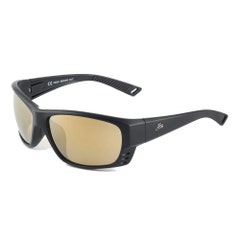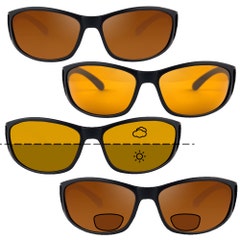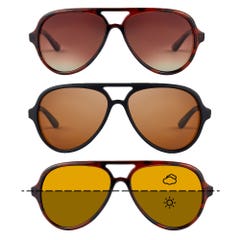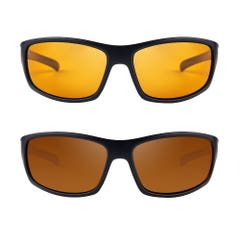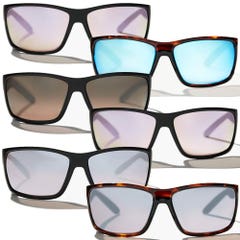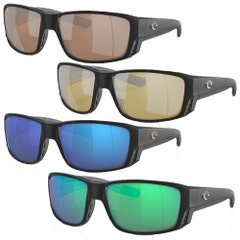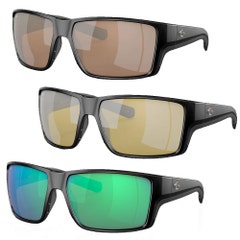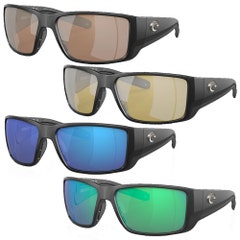Choosing the Best Polarised Sunglasses for Fishing
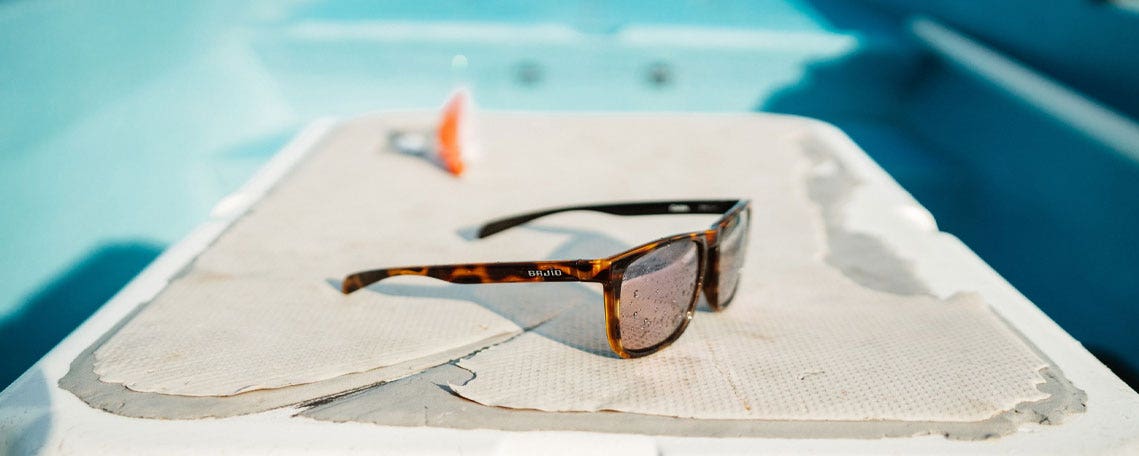

Fishing Sunglasses
As a fly casting instructor and angler I always wear a pair of polarised sunglasses and I insist on my clients doing the same - the consequences of a hook lodged in someone's eye does not bear thinking about...
The bad stuff...
There are many reasons for wearing a pair of fishing sunglasses. The most important for me is safety and protection. In almost all forms of angling, be it fly fishing, spinning, bait or lure fishing, hooks at some point will be passing in close proximity to me, my fishing partner’s or client’s eyes. A hook in the eye is not a pretty sight with the obvious potential to result in a life-changing outcome. Wearing a pair of glasses provides protection against this all too common occurrence – just enquire at any hospital A&E department.
Apart from the more obvious use of sunglasses to protect our eyes from the sun’s UV rays, glare coming from the water (even in low light conditions) and protection from wind, sand and dust, through wearing polarised lenses we are also enhancing our visibility when looking through water. Polarised glasses can also help us identify obstacles, trip hazards and steep drop-offs below the water’s surface.


Now for the good stuff...
As a fishing tool - due to the ability to see more clearly below the surface of the water, a pair of polarised sunglasses are invaluable. They help anglers ‘spot’ fish in the water, be it stalking trout in a chalkstream to bonefish on the tropical flats. Here at Sportfish we supply a range of glasses from the entry-level Sportfish and Fortis ranges which include glasses for kids, to the top of the range Costa sunglasses.
Polaroids come in two main materials - polycarbonate (plastic) and glass and both have their pros and cons. The pros for the polycarbonate lenses are that they are very light in weight and are ideal when coupled with a rimless or very lightweight frame. They are also much cheaper than the glass equivalent and start from as little as £20 and go up to around £280.
Glass, on the other hand, is heavier but offers the added bonus of being scratch resistant and therefore more durable, offering a longer life for your investment. They are naturally more expensive to produce and start from around the £175 mark. We are regularly asked if the pair of glasses you buy really does make a difference to what you can see. The simple answer to that is a resounding YES! Buy the best that you can afford, look after them and they will look after you.


There are several shades of lens colour available on the market and each is designed for a specific use:
Copper: General fishing in freshwater ideal “all rounder” for rivers and stillwaters alike.
Yellow/Sunrise: Perfect for low light conditions a must have for those late evening rises.
Silver Mirror: Perfect for freshwater sight fishing and variable light activities.
Blue Mirror: Traditionally a lens for blue water fishing but favoured by many for the flats also.
Green Mirror: Designed with the saltwater flats in mind but equally at home in the UK.
In addition, always attach your glasses to a retaining cord, some even float, so this essential piece of angling equipment doesn’t get lost if knocked or blown off.
Protect your eyes and maximize your chances of spotting and catching that elusive prey, as we say “See what’s out there”.
Guide by Sportfish expert, the late Campbell Thomson





